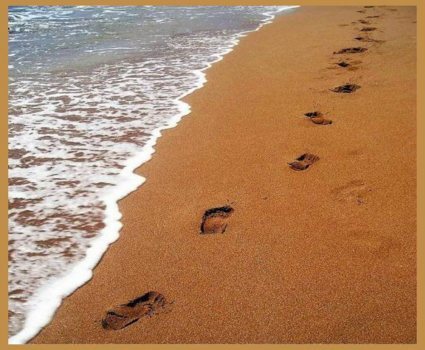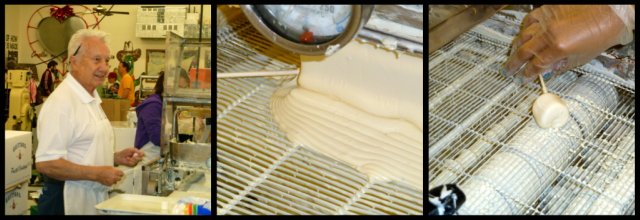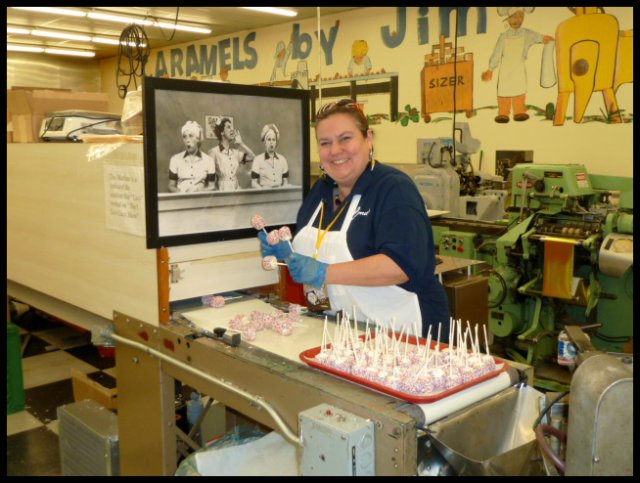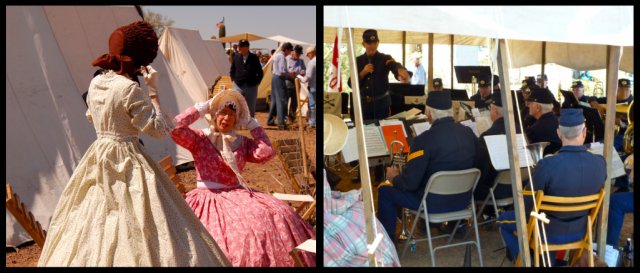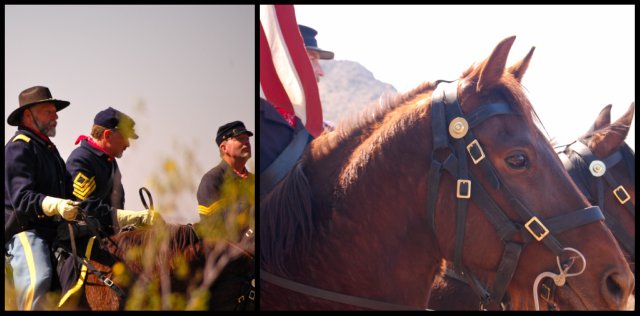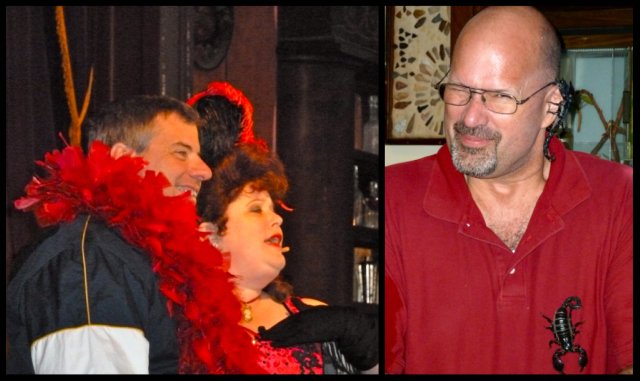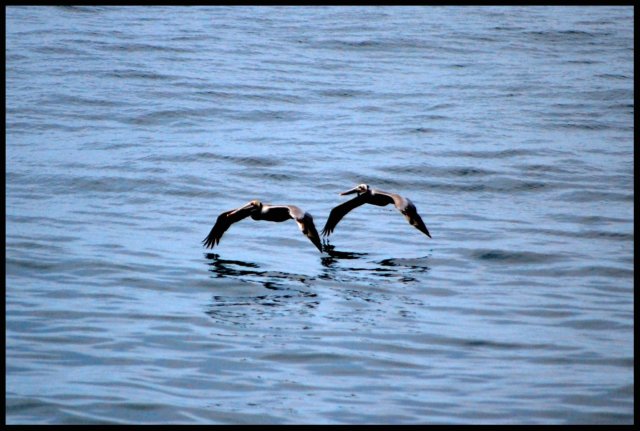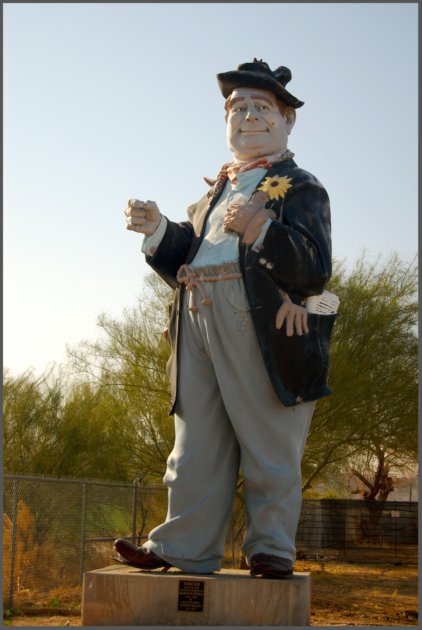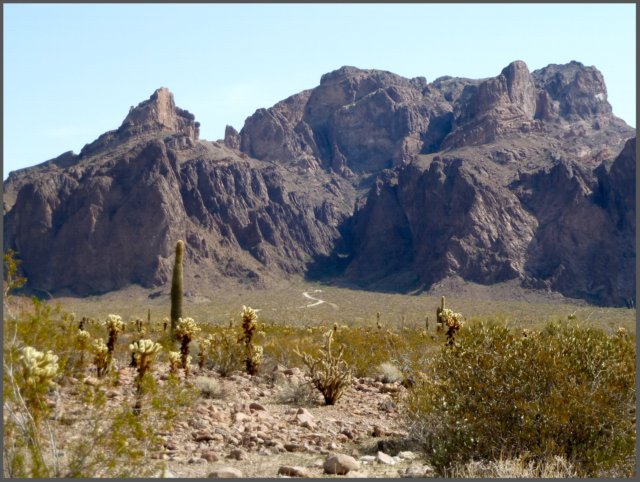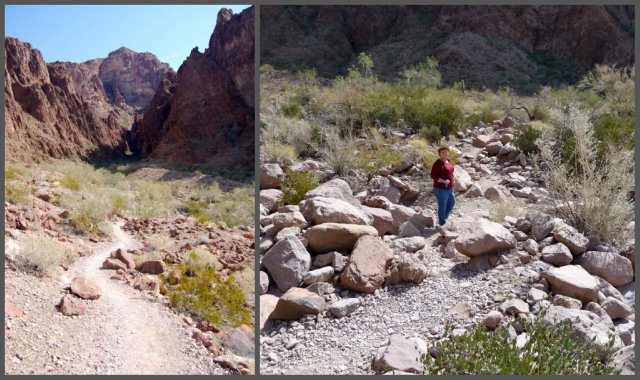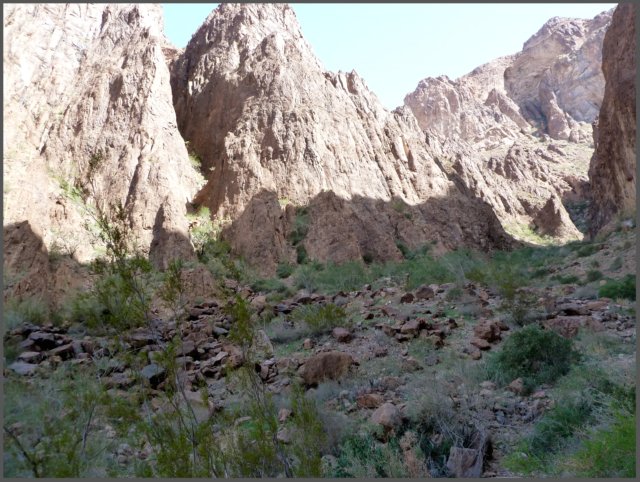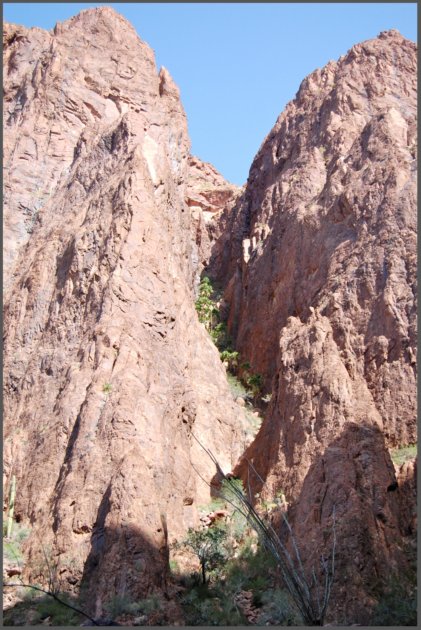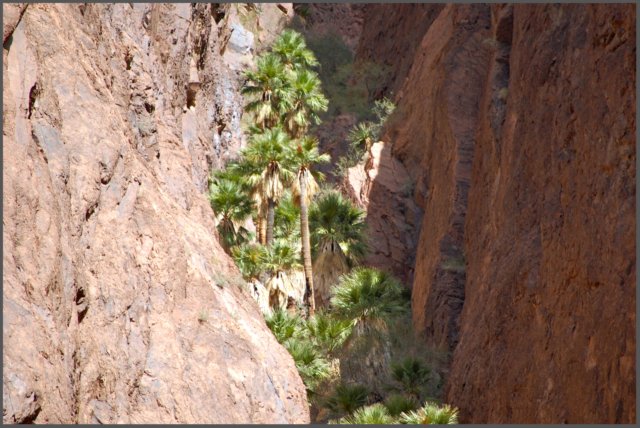Most people would say that the Civil War was fought east of the Mississippi River. When we lived on the East Coast, we visited six Civil War battlefields and learned how one led to another. What many people do not realize is that the Civil War was also fought in Colorado, Texas, New Mexico, and even Arizona in an effort by the Confederacy to gain control of gold mines in California or at least blockade the routes so gold could not reach the east where it was needed to finance the war. Last weekend we went to a re-enactment of the battle at Picacho Peak (#66 on my "
100 Things in Arizona" list), the western-most battle of the Civil War.
The Civil War in the Southwest was a re-enactment of three battles, two in New Mexico (Battle of Valverde and Battle of Glorieta Pass) and the one at Picacho Peak in Arizona.
The festivities were not on Picacho Peak but on the mountain and valley to the north of it. We arrived late morning and found LOTS of people already there. We quickly set up "camp" and watched the first battle re-enactment before eating the picnic lunch we brought.
People of all ages came out to enjoy a beautiful weekend and learn something about history.
Down the hill where it was flat vendors had set up a "mini-mall" selling food (really good kettle corn!), homemade sarsaparilla and birch beer as well as authentic period clothing, drawings of Civil War battles and heroes (on both sides!), toys children would have played with in the mid-1800's, and just about anything having to do with the Civil War.
Over 200 re-enactors from all over the US live in an authentic Civil War camp during the weekend. Many of their ladies accompany them dressed in period clothing. We saw them rolling bandages, making lunch, doing many of the same things women in that era would have done. The re-enactors are not paid and provide their own uniforms, equipment, guns and ammo. We talked to several and they are Civil War experts... as well as accountants, teachers, engineers, etc. Many of them are retired and travel the Civil War re-enactment circuit.
The inside of the tents have authentic period "furnishings" (cots, blankets, cookware, etc.) ... although they do use the "modern" port-a-potties!
The three battles were spread out over the day but there was a lot to see in between fighting! We missed the fashion show put on by the women- they modeled their clothes and then both Union and Confederate uniforms were explained- when we ate lunch. An Army band played tunes of the times- fun to listen to!
I'm quite certain these ladies did not get sunburned- although I cannot imagine wearing such heavy clothes in the hot weather! The band was delightful to listen to as they played several toe-tapping tunes.
My favorites were the artillery and cavalry demonstrations although there was neither artillery nor cavalry at the battle at Picacho Peak. They were there strictly for the New Mexico battles.
The cannons were really LOUD!! Most of the artillery gunners who survived were deaf after the war. Each cannon has a 5-6 person crew with each person having just one job to focus on.
The horses looked so calm and determined even with the the really LOUD cannons going off all around them. It was quite impressive! And reminded me of a great movie (War Horse) we recently saw.
One of the best things about being at a battle re-enactment is people-watching. There was a seventh grade class there (yes, on a Saturday!) and I loved watching these 12-13 year olds become not just interested in, but fascinated with, history. I overheard one group discussing what it would be like to fight a battle with "such slow weapons" and to see "the guy you're killing." And another group was talking about the idealogical differences between the North and the South. These kids were thinking!! And as we left, we overheard one say, "This is the best field trip ever!" And it wasn't just the kids that got into it! All around us people were talking about the politics of the Civil War, military strategy, life in the mid-1800's, etc.
Everyone likes to play... big boys...
... and little boys! This little guy was having his own "re-enactment" all by himself!
At last, it was time for the re-enactment of the Battle at Picacho Peak which was fought April 15, 1862 (this is the 150th anniversary of the battle!). The Confederacy claimed the entire New Mexico Territory in 1861 and occupied Tucson. The Union reacted quickly dispatching troops from Fort Yuma (the California Column) to march to Tucson. Meanwhile, the Confederacy had dispatched troops to Picacho Pass as lookouts. Union commander Brigadier General Carleton, upon reaching present-day Casa Grande, dispatched a group of scouts to reconnoiter the remaining route to Tucson. Recognizing a potential ambush at Picacho Pass, the Union scouts broke into two patrols; the first continued on the stagecoach road (near present-day I-10) where they encountered Confederate soldiers waiting in ambush. The second Union patrol came up on the Confederate flank, taking them by surprise and capturing several Confederates. This push and shove continued through the afternoon when both sides retreated. Most historians call the battle a draw with neither side scoring a victory. The Confederates continued to be outnumbered in the west and were too far from the main Confederate Army to receive supplies or reinforcements regularly. When Carleton's Union troops reached Tucson, the Confederate army had retreated and were being attacked repeatedly by Apaches in the Chiricahua Mountains in southeastern Arizona. They finally left the Arizona territory all together in May, 1862.
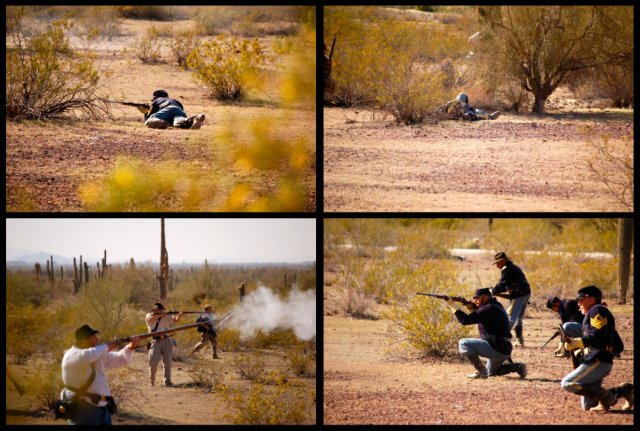
The re-enacters did a great job making the battle look and sound realistic. The guy in the top right photo is a casualty. We learned that the farther the re-enacters travel, the longer they "live" in the battle!
After the festivities ended for the day, we stopped at Picacho State Park before heading home. We did a quick drive through the park and saw lots of wildflowers!
I ♥ springtime in the desert!
Even the side of the road (I-10) was often covered with wildflowers!
Thumb Up or Down: UP!! Lots of fun!
Miles Round-Trip: 132.7 miles
Miles to Date: 4062.5 miles
Percent of List Completed: 38%
Date of This Trip: March 10, 2012
